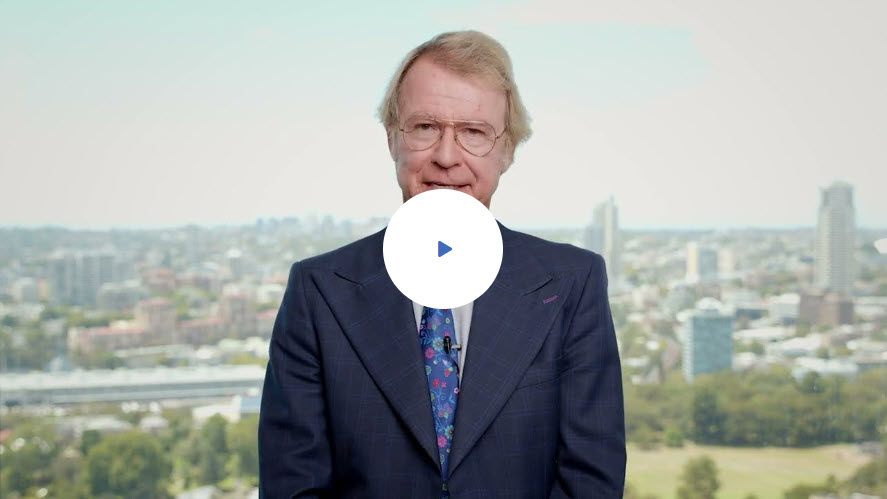A quick recap of 2022
The good news is that 2022 finally saw the world shake off the grip of the pandemic. But the past year turned out more difficult than expected for investors.
- Inflation surged to levels not seen for decades.
- Russia invaded Ukraine, leading to higher energy and food prices.
- Central banks raised interest rates at the fastest pace in decades.
- Bond yields surged in response.
- Chinese growth fell sharply.
- Geopolitical tensions worsened with war in Ukraine and worries about China-Taiwan.
- Investors increasingly fretted about recession.
- Tech stocks and crypto currencies were hit hard.
A look back at investment returns and 2023 forecasts
Despite these problems, global GDP (Gross Domestic Product) is expected to come in at around 3.2%, down from 6% in 2021 and Australian GDP is expected to be around 3.5%, down from 4.8%.
Investment returns for major asset classes
| Total return %, pre fees and tax | 2021 actual | 2022 actual | 2023 forecast |
| Global shares (in Aust dollars) | 29.6 | -12.5 | 4.0 |
| Global shares (in local currency) | 24.3 | -16.4 | 7.0 |
| Asian shares (in local currency) | -6.8 | -18.3 | 10.0 |
| Emerging mkt shares (local currency) | -0.2 | -15.5 | 10.0 |
| Australian shares | 17.2 | -1.1 | 10.0 |
| Global bonds (hedged into $A) | -1.5 | -12.3 | 3.0 |
| Australian bonds | -2.9 | -9.7 | 4.0 |
| Global real estate investment trusts | 30.9 | -25.9 | 9.0 |
| Aust real estate investment trusts | 26.1 | -20.5 | 9.0 |
| Unlisted non-res property, estimate | 12.3 | 9.5 | 4.0 |
| Unlisted infrastructure, estimate | 12.0 | 4.0 | 5.0 |
| Aust residential property, estimate | 23.0 | -7.0 | -7.0 |
| Cash | 0.0 | 1.3 | 3.1 |
| Avg balanced super fund, ex fees & tax | 14.3 | -5.2 | 6.3 |
* Source: Thomson Reuters, Morningstar, REIA, AMP
Looking forward to 2023 | 4 reasons to be cheerful
With inflation still way too high, we’re likely to see ups and downs on investment markets. But there is reason for optimism.
1. Inflationary pressures look to have peaked so inflation could fall faster than expected.
2. Interest rates are likely at or nearing their peak, with rate cuts possible in Australia in late 2023/early 2024.
3. While the risk of recession is very high, it may not turn out as bad as feared.
• In the US it may just be a sharp slowdown or mild recession.
• Europe has moved away from Russian gas very quickly and providing its winter is mild, may continue to hold up better than feared.
• After initial Covid-related setbacks, Chinese growth is likely to rebound as it reopens.
• Australian growth is likely to slow but avoid recession, reflecting the less aggressive RBA, the pipeline of home building work and a strong business investment outlook.
4. The geopolitical situation may not be so bad, with e.g. relations with China improving slightly.
Overall, global growth in 2023 is likely to be around 2.5%, well down from 6% in 2021, but not a recession. In Australia, growth is expected to slow to 1.5% and inflation is likely to fall.
7 bumps on the way
While this should make for better returns in 2023, there are likely to be bumps on the way.
1. Global shares are expected to return around 7%.
2. Australian shares are likely to outperform again – expect the ASX 200 to end the year at around 7,600.
3. Bonds are likely to provide returns around running yield or a bit more.
4. Unlisted commercial property and infrastructure are expected to see slower returns.
5. Cash and bank deposits are expected to provide returns of around 3%.
6. The Aussie dollar is likely to rise.
7. Australian home prices are likely to fall further as rate hikes continue to impact, resulting in an overall fall of 15-20%, but with prices expected to bottom around the September quarter, ahead of gains late in the year as the RBA moves toward rate cuts.
5 risks to keep an eye on
While this should make for better returns in 2023, there are likely to be bumps on the way.
1. Inflation - if it continues to rise, central banks could raise rates further, risking deep recession.
2. US politics - the return to divided government risks market volatility.
3. China - increased tensions around Taiwan.
4. An escalation of the Ukraine conflict could impact Europe.
5. Australian home prices - a sharper than expected fall as fixed rates reset to variable and unemployment rises, could cause financial instability.
Like to know more?

Oliver's insights - 21 great investment quotes
Investing can be scary and confusing at times. But the basic principles of successful investing are timeless and quotes from experts help illuminate these. Read more
Economic Forecast - 2024
Dr Shane Oliver reflects on key themes from the past year and suggests what investors should look out for in 2024. Read more
Oliver's insights - nine key things for successful investing
Successful investing is not always easy and can be stressful. Even in good times. For this reason, it’s useful for investors to keep a key set of things in mind. Read moreWhat you need to know
While every care has been taken in the preparation of this article, neither National Mutual Funds Management Ltd (ABN 32 006 787 720, AFSL 234652) (NMFM), AMP Limited ABN 49 079 354 519 nor any other member of the AMP Group (AMP) makes any representations or warranties as to the accuracy or completeness of any statement in it including, without limitation, any forecasts. Past performance is not a reliable indicator of future performance. This document has been prepared for the purpose of providing general information, without taking account of any particular investor’s objectives, financial situation or needs. An investor should, before making any investment decisions, consider the appropriateness of the information in this document, and seek professional advice, having regard to the investor’s objectives, financial situation and needs. This article is solely for the use of the party to whom it is provided and must not be provided to any other person or entity without the express written consent AMP. This article is not intended for distribution or use in any jurisdiction where it would be contrary to applicable laws, regulations or directives and does not constitute a recommendation, offer, solicitation or invitation to invest.
The information on this page was current on the date the page was published. For up-to-date information, we refer you to the relevant product disclosure statement, target market determination and product updates available at amp.com.au.
